Cervelo TestTeam get testing in Belgium
New frames, cranks, tyres, computers and more
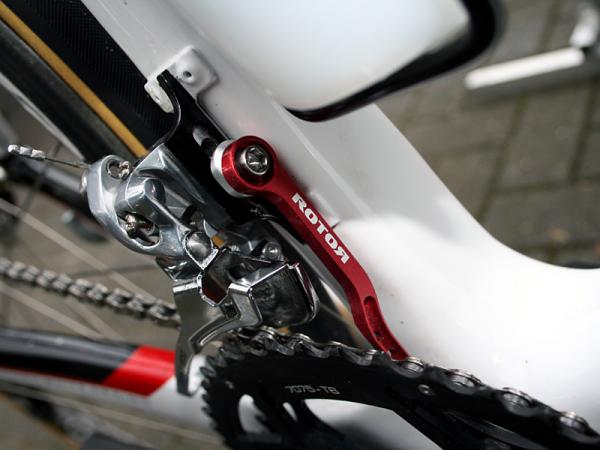
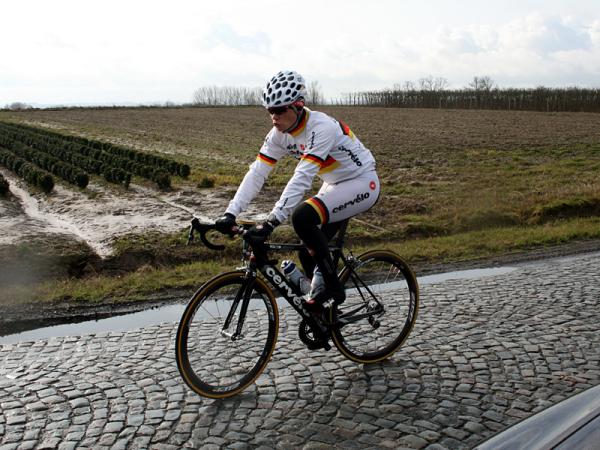
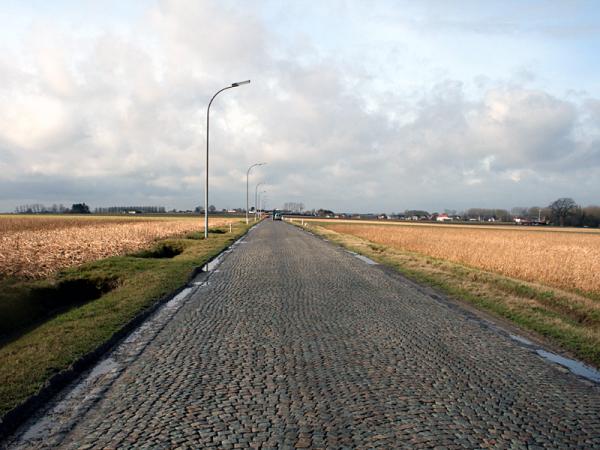
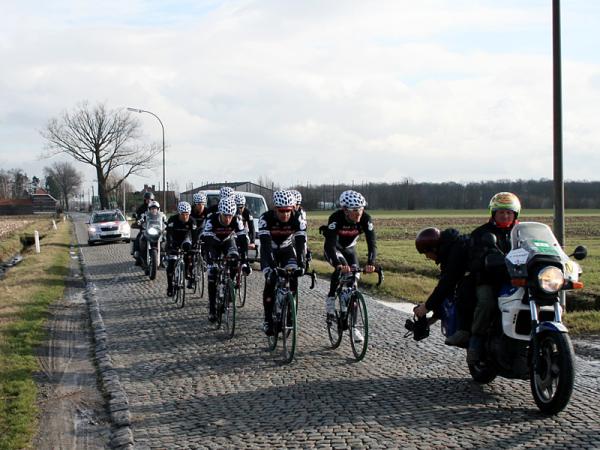
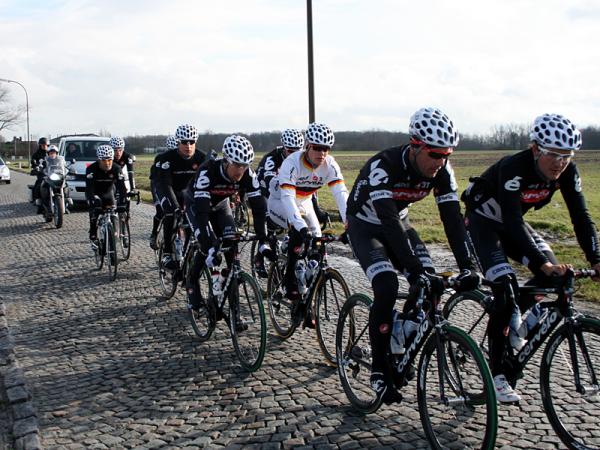
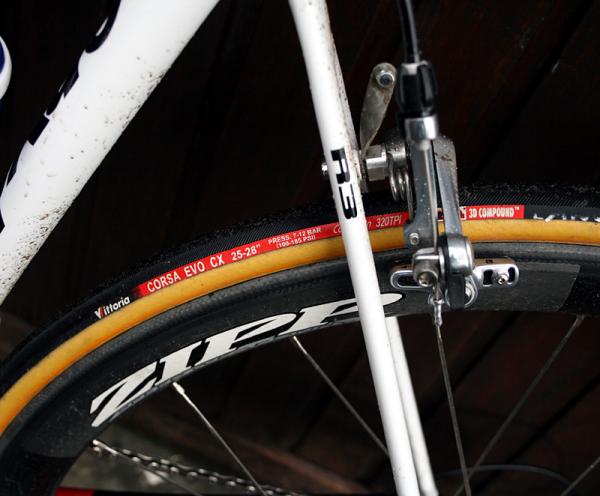
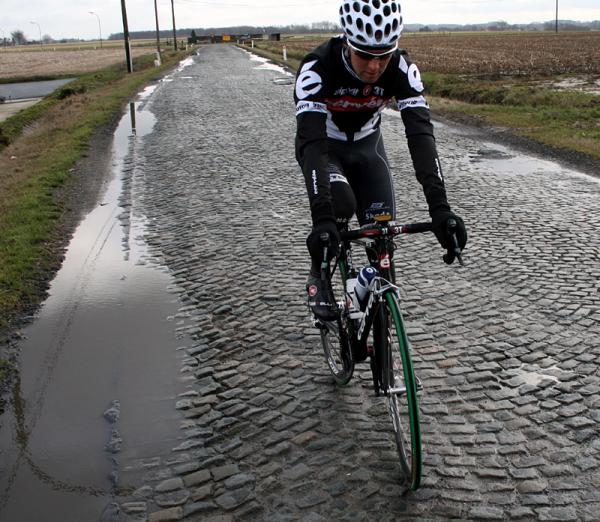
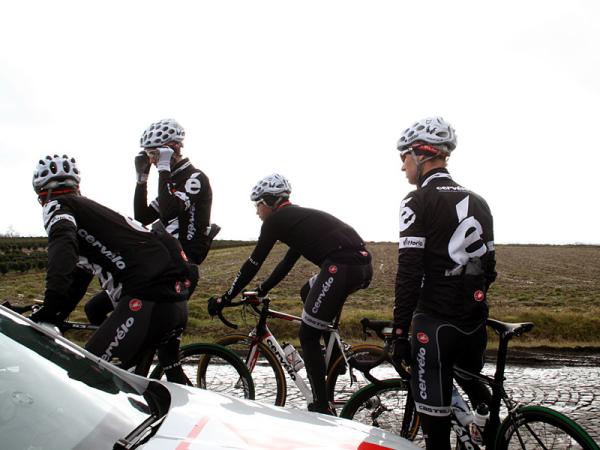
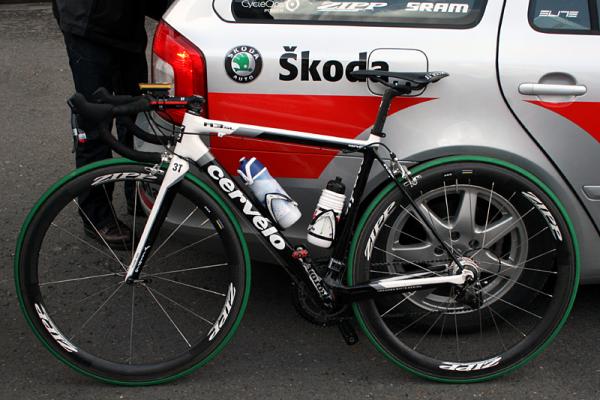
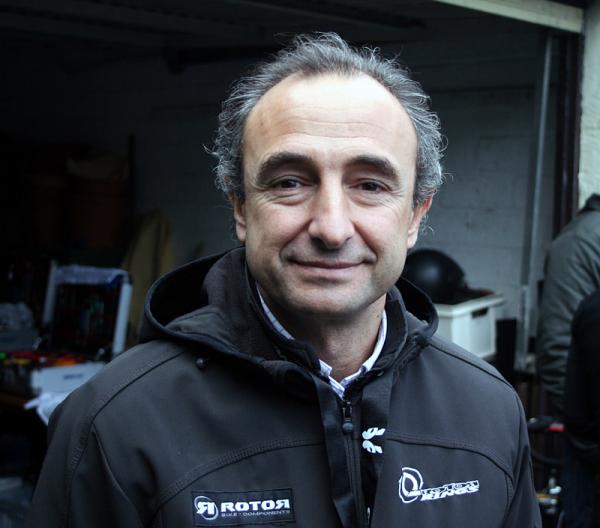
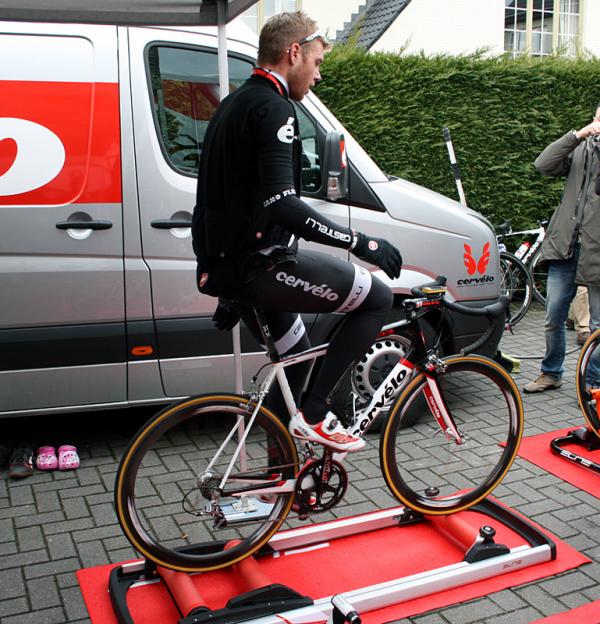
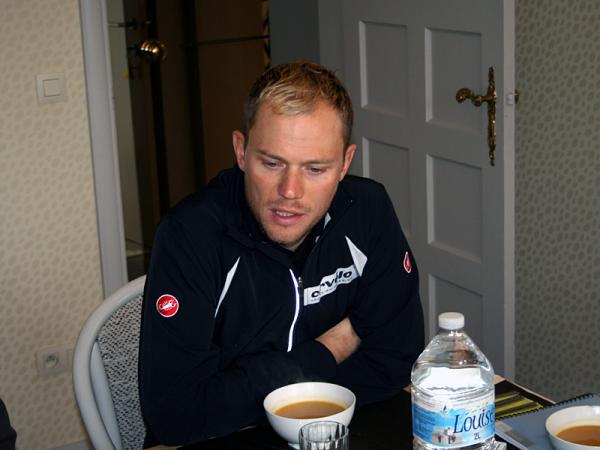
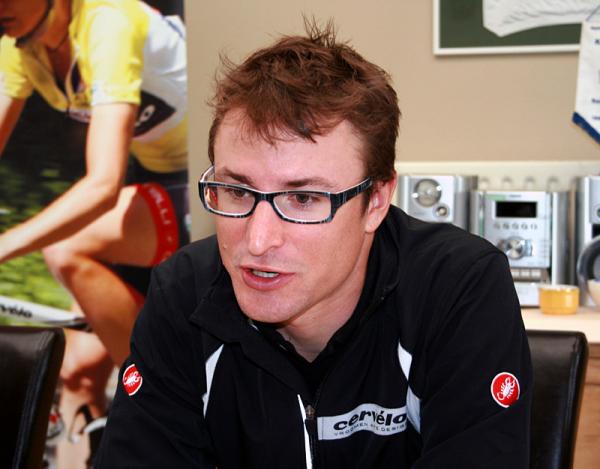
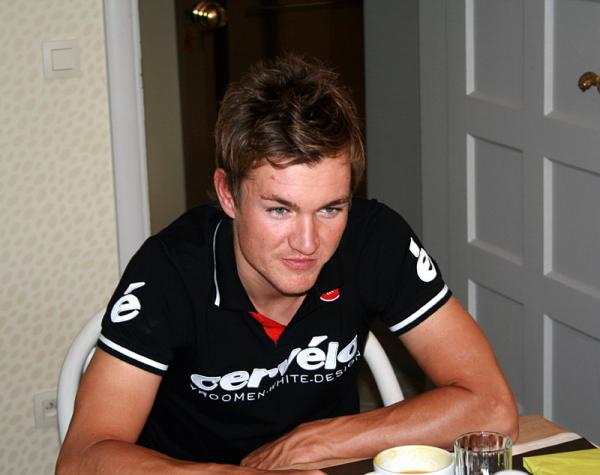
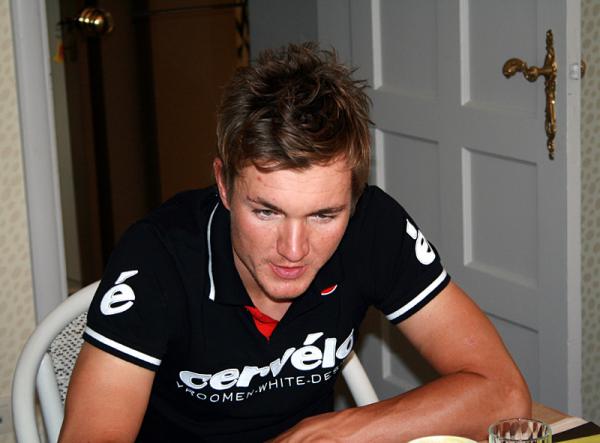
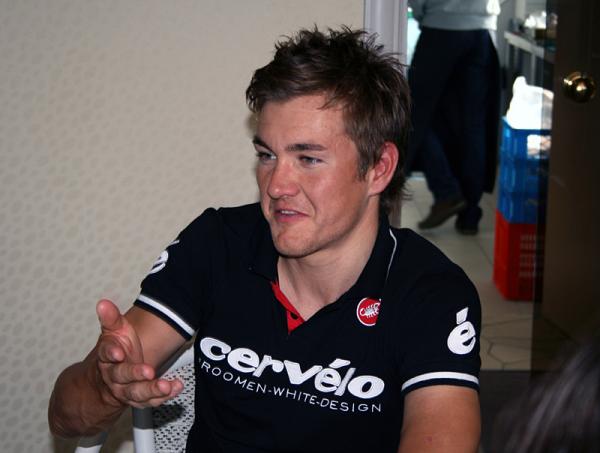
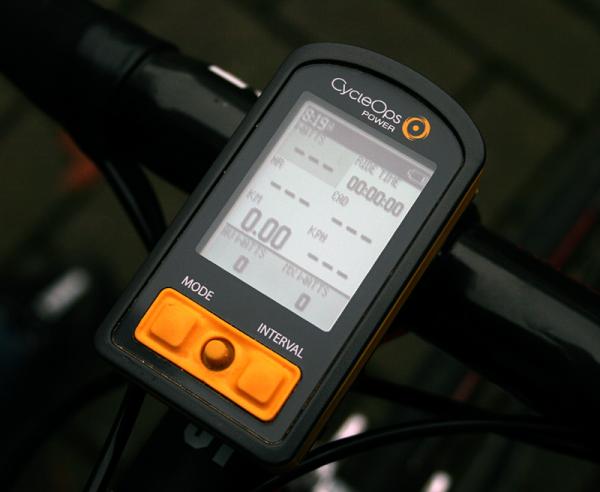
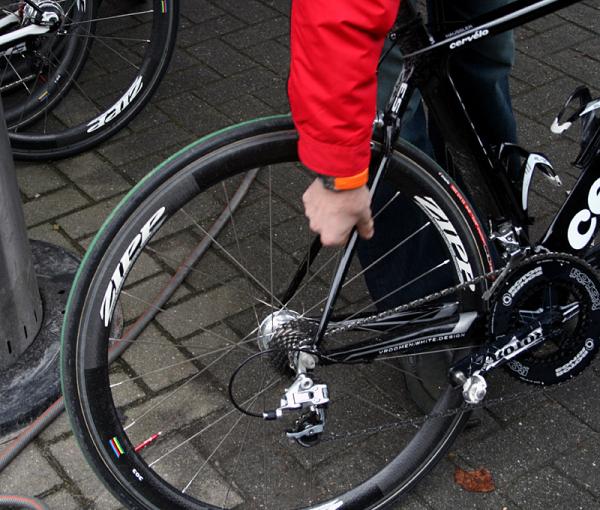
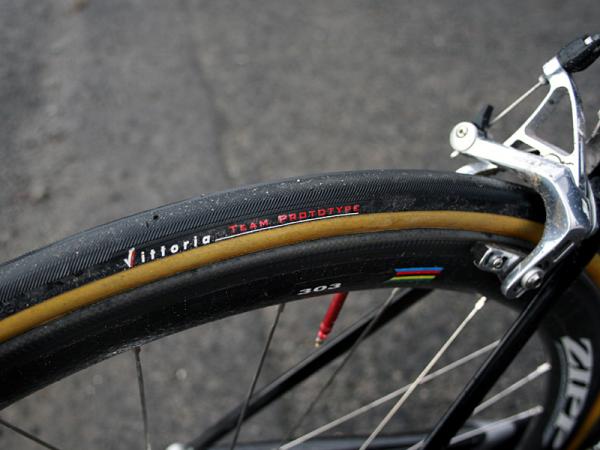
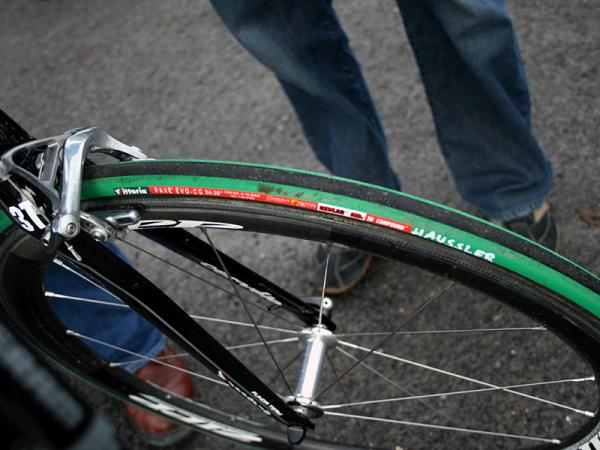
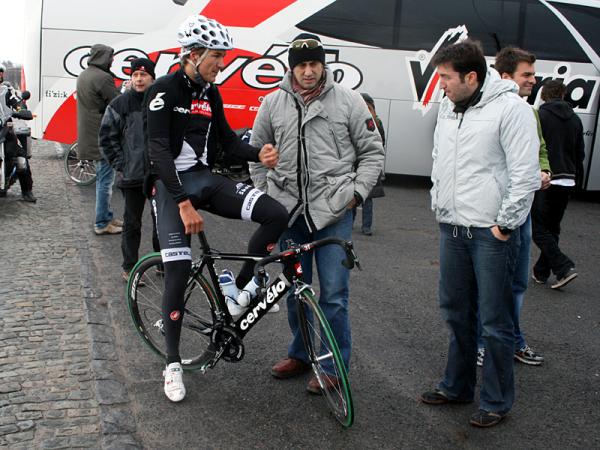
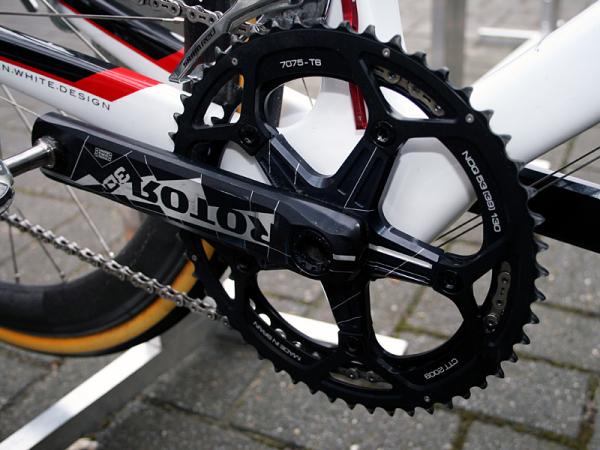
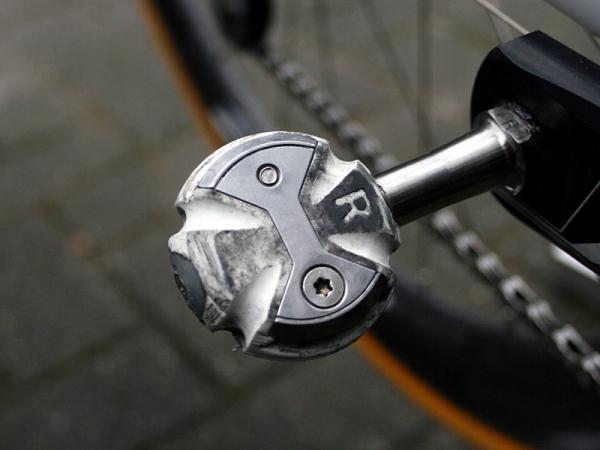
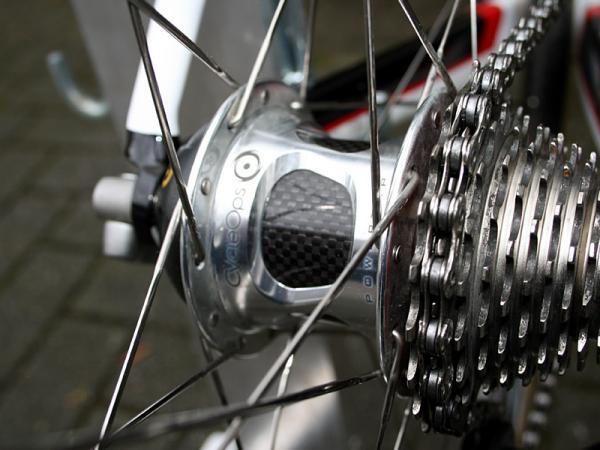
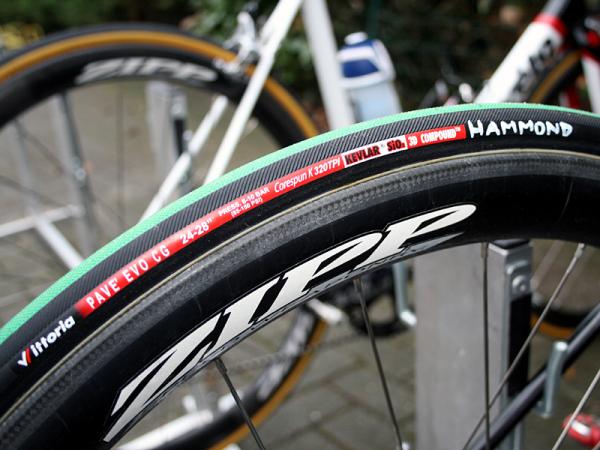
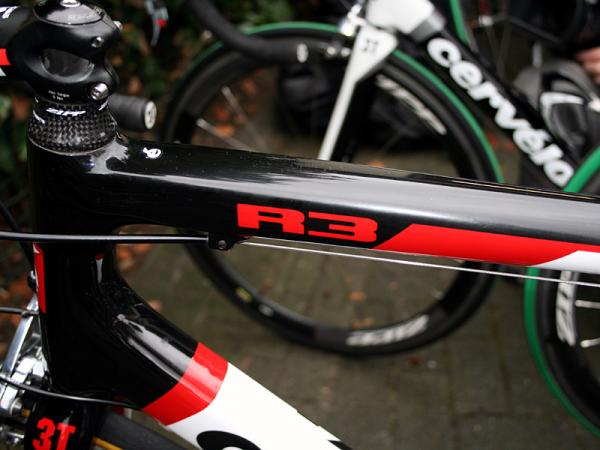

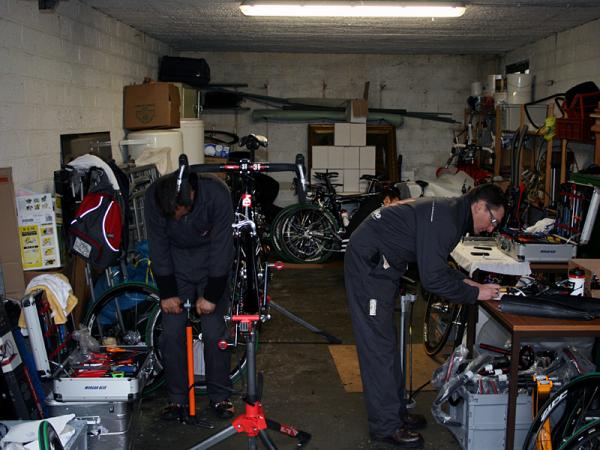
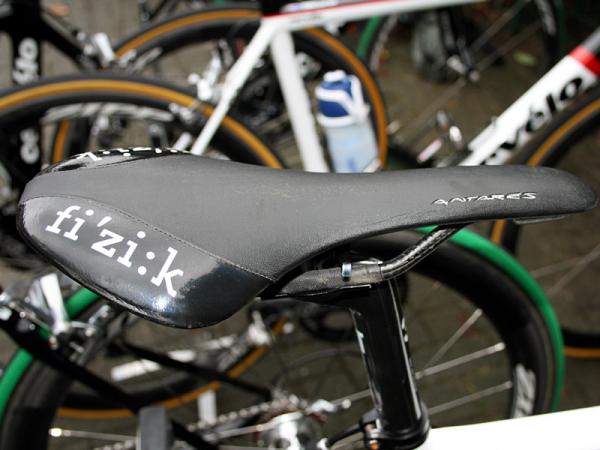
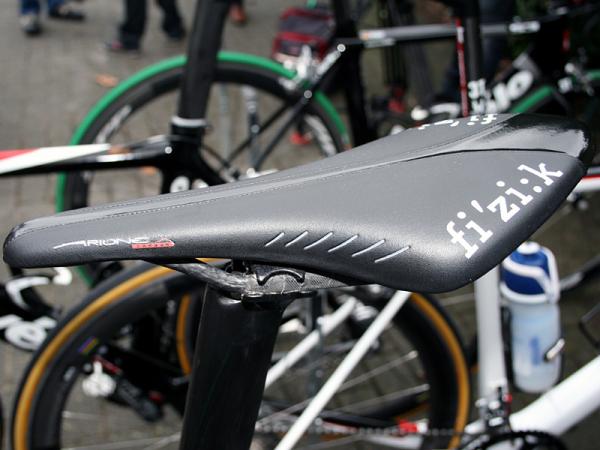
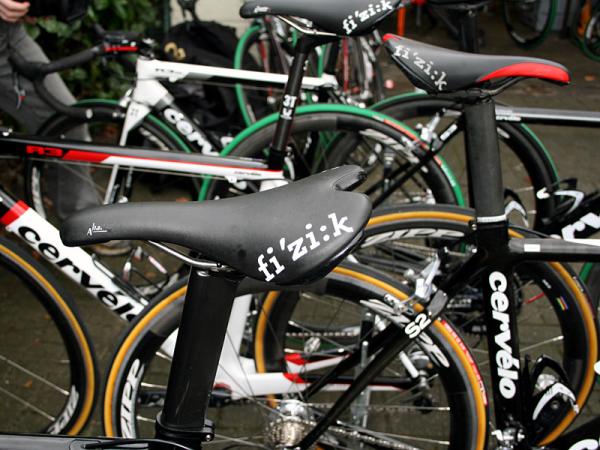
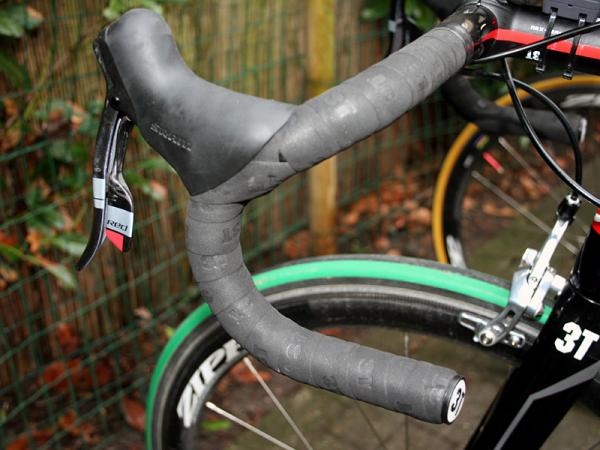
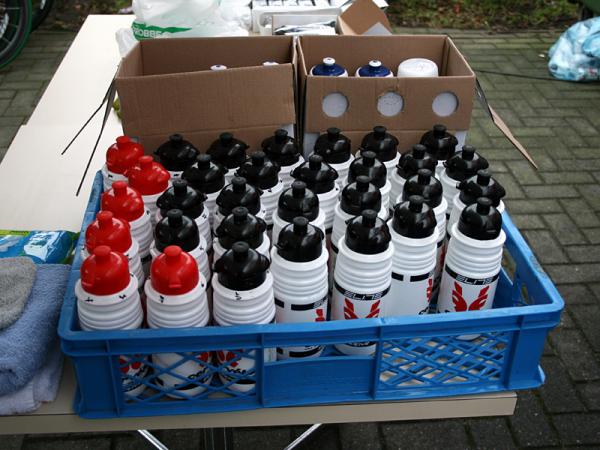
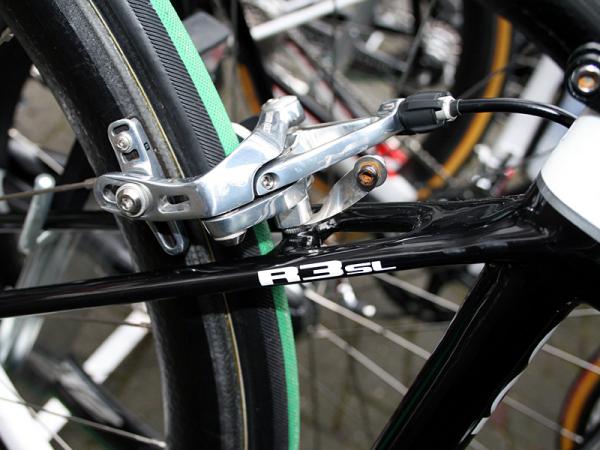
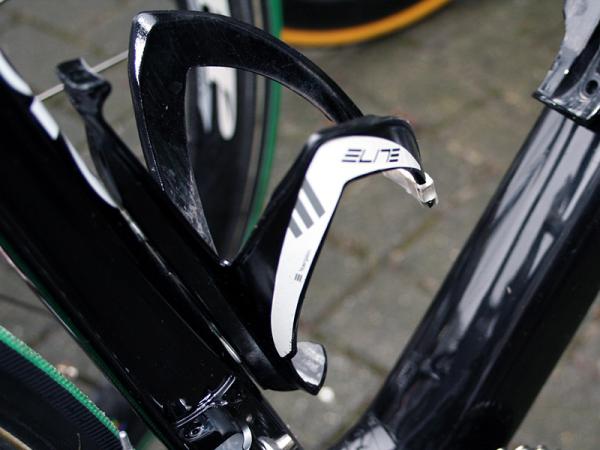
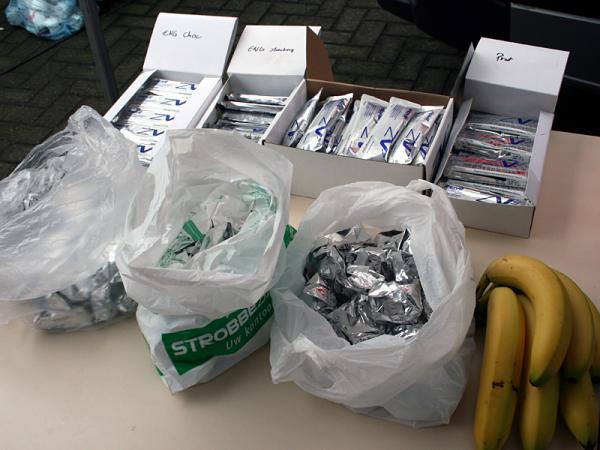
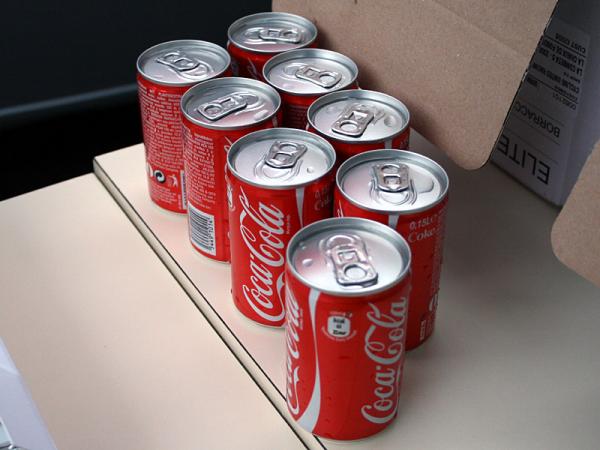
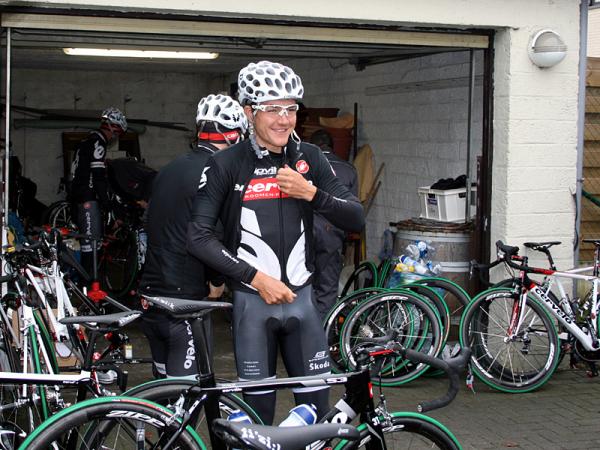
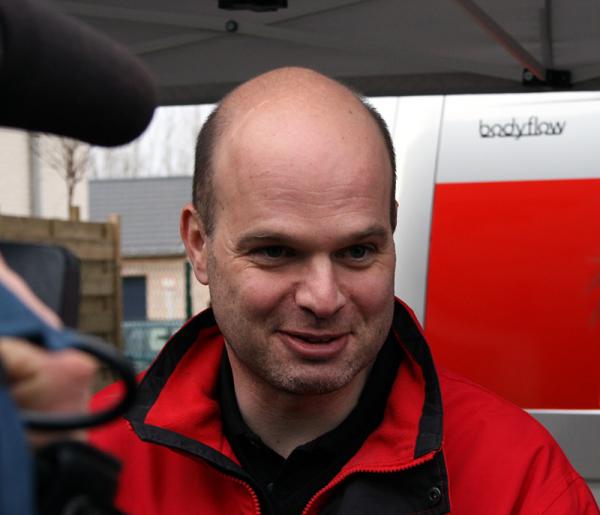
The Cervelo TestTeam were living up to their name two days before the Omloop Het Nieuwsblad, the opening race of the Belgian season. On a cold and windy Thursday morning, nine of the riders spent a couple of hours training on the parcours, including a couple of sessions on the Belgian pavé.
They were trying out new frames, cranks, computers and tyres, and even testing tyre pressures – all valuable feedback that will help the team in the upcoming races as well as help their sponsors develop their products. We were there for the ride.
Frames: From S2 to S3
Canadian frame manufacturers Cervelo are the team's main sponsor. Cervelo pioneered using aero frame tubing on normal road bikes, going against the conservative view that it makes the ride harsher and the handling worse.
"Last year was the first year we really used the aero bike on the cobblestones," Cervelo co-founder Gerard Vroomen said. "We've been really wanting to do that for a long time but we were always told that this was not possible.
"Because we started with a clean slate last year we told riders that we thought it was possible. Then Thor Hushovd won Het Nieuwsblad on an aero frame [an S2]! Not that that convinced us because that's just one race, but at least it made a lot of riders look at it seriously and try it out some more. So this year we switched them all from the S2 to the S3, which gives us even more compliance in the rear wheel. We've been working on some feedback from that from the riders."
The main differences between the S2 and S3? "Both are a blend of four different fibres, the blend being a little different," said Vroomen. "The S3 has different chainstays and more slender seatstays. We figured out how to do that with the [non-aero] R3.
The latest race content, interviews, features, reviews and expert buying guides, direct to your inbox!
"It's similar on the S3 but rotated 90 degrees so the shape is aerodynamic instead of oval. But the principles on how to make something that small and to get some more vertical compliance from the rear, that's stuff we learned from the R3. We're also refining the R3, so this year they'll ride the R3, probably just for Paris-Roubaix, because of its better tyre clearance, which is important there."
What about Cervelo's new sub-700g Project California frame? "We're testing that this week as well – but not when you guys are around! We tested a version in Portugal. That was the first time Thor rode it and it was more positive that we anticipated. But we're still going to make some changes to it.
"Whether we'll use it in a race? Until the UCI change their rules it's not really that useful a frame. It's useful for us in that we learn things. But in the end if we save 200g we prefer to put those savings into more aerodynamic shapes, rather than just saving 200g and having to put 200g more lead on the frame for Thor. But hopefully those rules will change."
Gerard Vroomen is more than happy to give his thoughts on the UCI and their technical regulations, but that will have to wait for another article.
Gear: SRAM Red and Rotor
Cervelo TestTeam have (mostly) been using the SRAM Red groupset since they started in 2009 and not much has changed in that department. SRAM's Jason Phillips told us that the feedback they get from the team is still important. "This is the perfect test environment," he said. "If it works in the classics it works everywhere.
"The reason why SRAM have come so far in a short time on the road is because of the development with the teams. It's a whole different level of power. You ride around in the bunch and you're not going around holes, you're going straight through them. It's not just the power the riders are putting through the bike, it's the terrain and the amount of damage the bike's getting."
Rotor components have also been on board from the beginning. Company boss Ignacio Estelles said their relationship got off to a slightly rocky start, as bigger riders like Thor Hushovd, who puts out over 1,600 watts in a sprint, complained that the Agilis cranks - which were developed for low-power climbers like Carlos Sastre - weren't stiff enough.
There was, shall we say, a strong difference of opinion for a while but eventually Estelles was convinced that they needed a beefier crank. They've now developed a heavier, stiffer version - the 3D - based on their time trial and track cranks, and this has been well received by Mighty Thor and co.
Rotor's Q-Rings are another interesting part of the mix. These slightly ovalised chainrings are designed to maximise power through all points of the pedal stroke as well as helping to correct muscular imbalances in the riders' legs. Last year, half of the riders on the team used them, while the other half used round rings. This year, closer to 75 percent are using Q-Rings.
Why? "Better traction and power on the cobbles," said Estelles, who added that each rider has a slightly different Q-Ring setup depending on at what point in the pedal stroke they put down the most power. He said it takes one to two days to get used to the different feeling of the oval rings and around two weeks for the muscles to properly adapt.
Riding on the cobbles means a greater risk of the chain falling off and sometimes impaired shifting performance. Rotor overcome this through a chain catcher on the inside of the small ring. They've tweaked this based on mechanic and rider feedback over the past year, and by the looks of things more riders are prepared to use the oval rings in the Classics.
Wheels and tyres: Fatter is the way to go
The team are using Zipp wheels again: 404s for regular racing and wider, shallower 303s for the cobbled classics. The tubular tyres of choice are Vittoria's Pavé and Corsa Evo CX models. The standard widths for these are 27mm and 23mm, but the team have been trying a 24mm Pavé and a 25mm Corsa Evo.
Vroomen explains: "The 24 is basically an aero Pavé (I'm not really doing it justice if I describe it like that). And the 25 is the same tread pattern as a standard Evo CX 23mm but on a bigger casing. That allows us to run that tyre with a slightly lower pressure but still have very little rolling resistance and that fits very well on the new, wider Zipp rims.
"In general, I think everybody should be riding wider tyres all the time but especially on a race like this weekend or Flanders, a Pavé is really overkill. So I think the 25mm Evo CX is really the way to go."
Tyre pressures are vital to get right too, and during the team's recce of the 2.5km Lange Munt cobbled sector, they tested different combinations of tyres and pressures. "One thing we're testing is 8, 7, 6, 5 bar and then see what the results are," said Vroomen. "Every mechanic of every professional cycling team puts too much pressure in the tyres. We've weaned them off of that so at least there's not 12 bar in them any more.
"We don't run these crazy high pressures ever because it actually increases rolling resistance. But how low we can go? That's what we're trying to ascertain. In Paris-Roubaix, in some cases for some riders, we run less than 5 bar. But that's quite personal with body weight.
"There's sort of an optimum so you want to stay close to that. That depends on the surface as well. That's why the ideal pressure on the track is higher than on the road. In general a wider tyre has a lower rolling resistance than a narrow tyre. You can take a wider tyre with a little lower pressure and still have lower rolling resistance.
"There are tests that will show wider tyres are less aerodynamic. But a significant portion of that is because you have all these rims that are optimised for a 21mm tyre. You put a 27mm tyre on it and of course it's crap but that's not really fair to the tyre. Now you see with the Zipps for example, you have the wider Zipps.
"The difference will not be as big as when they measured it five years ago because the rim wasn't really designed for that width. That's why we combine the on-the-road feedback from the riders, which is qualitative, with what we measure in the lab and try to find an optimum. "
Measuring it all: CycleOps PowerTap
Cervelo switched power meter sponsors from Quarq to CycleOps PowerTap this year. That means the bikes are all equipped with SLC+ power measuring hubs and Joule 2.0 computers. CycleOps' Jesse Bartholomew told us that while the hubs are unchanged from previous models, he's keen to get feedback on the Joule, which has far more functions than the standard PowerTap Cervo head unit.
"That's wrapping up development and final testing here so it's been nice to get that on the team," he said. "The Joule was specifically developed in response to some of our experiences with other teams. Because in a lot of cases there's too much going on to download the data and spend time analysing things. They need that feedback immediately so that's how that product was developed. From that perspective it's working out very well."
Is having all that data at your fingertips actually useful in a race? "A little bit. In most cases the value of power measurement is over a longer period of time – understanding bigger trends in the data so you can make sure you're going harder than in the past, training properly or resting.
"There are some specific examples like in the time trial. Most guys know what they can sustain for 40km or whatever. We've had experiences with a lot of guys benefiting from that in the TT. Make sure they don't start out too hard, specifically. And then being motivated towards the end, knowing you've been able to sustain a certain number in the past so it motivates you to do that same performance in the moment."
Is there anything new in the works from PowerTap? "We've got a lot coming down the pipe here and this team is just going to help accelerate all that and make sure we hone in where we need to," said Bartholomew. "So there'll be some new things next year but nothing to really talk about right now. It can always get smaller and lighter. That's always a possibility."
